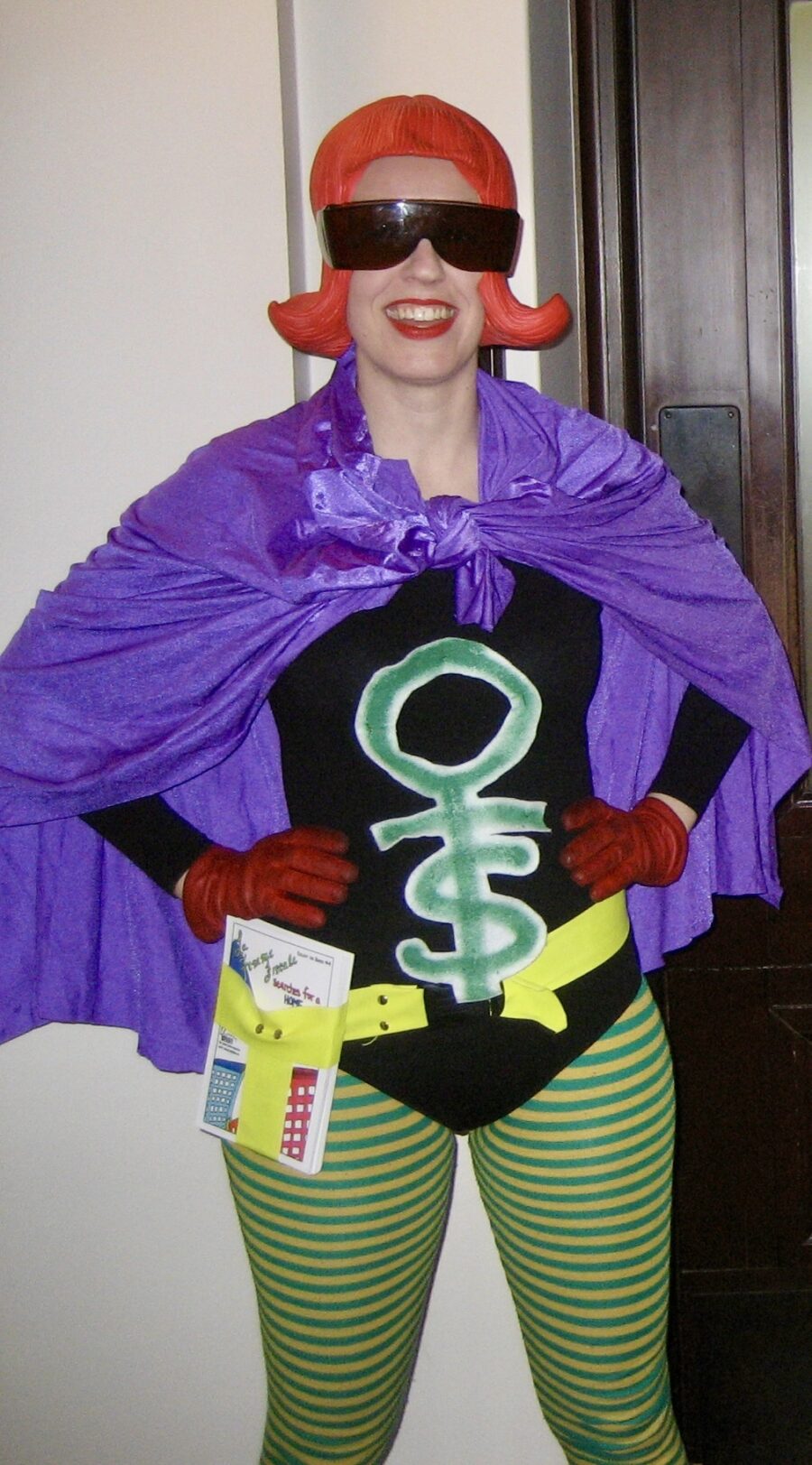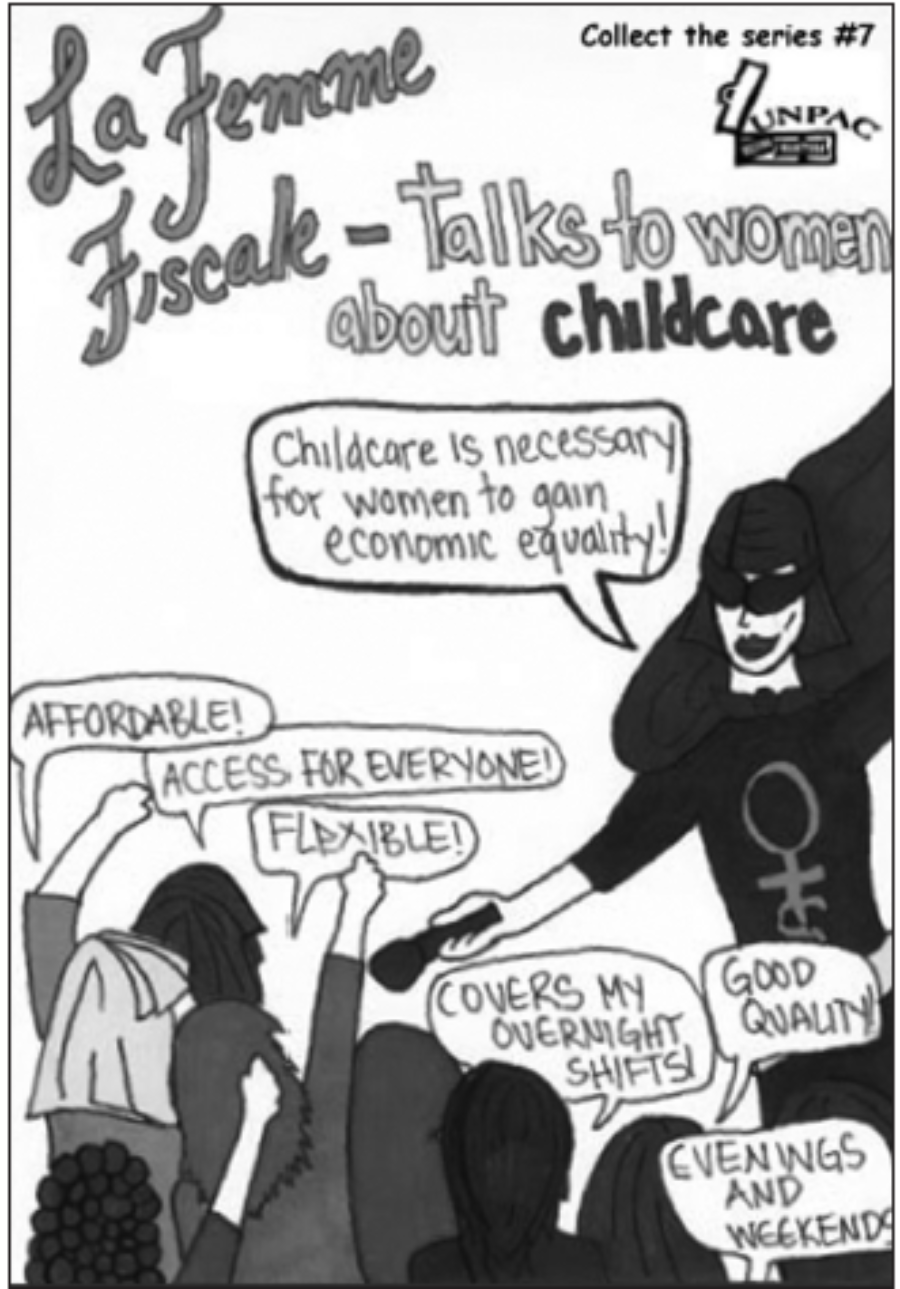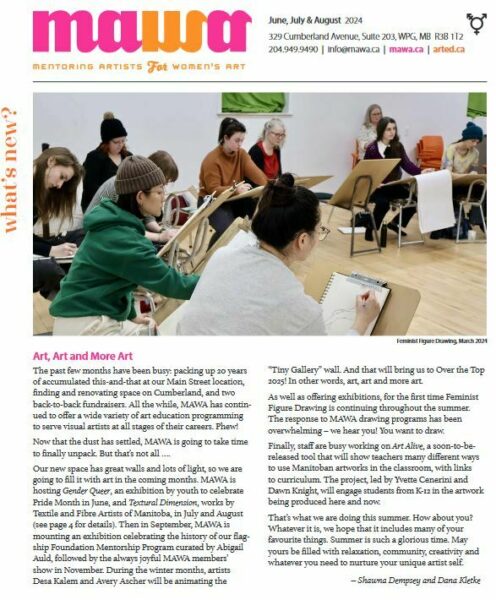
La Femme Fiscale’s second annual appearance at the Manitoba Legislature, 2007
Have you heard of the elusive Winnipeg superhero Femme Fiscale? Almost 20 years ago, Femme Fiscale attended Manitoba budget scrums clad in a shiny cape and striped tights. She used her oversized POV (point of view) goggles to look at Manitoba’s finances through her gendered lenses, surveying how the budget affected women in the province. Femme Fiscale was a hero championing women in Manitoba, with her knee-high boots firmly planted on the ground (while the cherubic 17-foot Golden Boy, Manitoba’s symbol of economic prosperity, had his head “stuck in the clouds”). She worked to bring the issue of women’s economic equality to the attention of politicians and the broader public.
What would Femme Fiscale think if she knew that Manitoba ranks the lowest in gender equality in the country, according to a recently released report by the Canadian Centre for Policy Alternatives (CCPA)? CCPA’s 2023 update on the gender gap in Canada used a 17-indicator Gender Gap Index to assess progress from 2019 to 2021. Unfortunately, Manitoba reported the lowest gender parity score. Existing inequities worsened during the acute phase of the pandemic, and women and gender diverse people are struggling to recover.
The rise in inequality in Manitoba, both income inequality and gender inequality, isn’t an accident. It’s by design, due to public policy that does not prioritize women, gender diverse people and families. And it has very real consequences.
Manitoba had the second worst personal security score in the Gender Gap Index due to increases in police-reported intimate-partner violence, sexual assault and criminal harassment targeting women. Manitoba has ranked at the bottom in this area for several years. The numbers are likely much higher as many incidents of violence against women and gender diverse people are not reported to the police.
Manitoba and Saskatchewan experienced the largest decline in life expectancy for women and gender diverse people. Indigenous women, girls and Two-Spirit plus people in Manitoba experience unacceptably high levels of violence and early death. Indigenous women accounted for 65 percent of homicides in Winnipeg between 2018 and 2022.
Concurrently, the provincial government was divesting funding from Status of Women Secretariat and Family Violence Prevention programs. After accounting for inflation, expenditures in these programs fell by 8 percent between 2016 and 2022.
Women in Manitoba earn 71 cents for every dollar men make, and the gender poverty gap continues to widen. Racialized and Indigenous women earn 59 cents and 58 cents, respectively, for every dollar a white man earns. Manitoba continues to experience the highest child poverty rate in the country, with many of them living in single-parent families headed by women.

La Femme Fiscale began her life as a series of comics by former MAWA mentee Becky Thiessen, produced by the United Nations Platform for Action Committee Manitoba, a local organization that grew out of the 1995 Fourth World Conference on Women in Beijing.
The lack of affordable childcare spaces in Manitoba is well documented and has negative effects on women and gender diverse people’s participation in the labour market. This lack only worsened during the previous provincial government’s tenure, with stagnant spending and few net increases in childcare spaces.
It is promising that the new provincial government has named a Minister Responsible for Gender Equity, Nahanni Fontaine, and has committed to searching the landfill for the remains of Morgan Harris, Marcedes Myran and Buffalo Woman. Minister Fontaine and Minister Bernadette Smith are internationally recognized Indigenous leaders and have spent decades fighting for MMIWG2S and their families. The Manitoba Cabinet also includes many other feminist and activist leaders.
Action must continue by investing in women, gender diverse people and families in Manitoba. A budget with a gender-equity lens includes investments in health, housing, income transfers, family violence shelters, training and education, and childcare.
What a budget with a gender-equity lens does not include, however, is $500 million in tax cuts. The top-earning 10% of men will receive almost 20% of the total amount cut, ($110 million), more than what is received by the bottom, lower-earning 60% of women. These tax changes will give millions of dollars to the wealthiest men in our province while leaving women, gender diverse people and families with what’s left.
Tax fairness is key to reducing income inequality and making real gains in gender equity. CCPA’s Gender Gap Index project aims to spur conversation about the comparative challenges that women and gender diverse people face and put forward alternatives. It is premised on the idea that it does not have to be this way. Femme Fiscale told us this 20 years ago and it’s the same today – good public policy uses a gender lens to invest in communities to break down barriers so all can thrive.
Jess Klassen is the Manitoba Research Alliance Coordinator and a CCPA-Manitoba Research Associate. She is also a MAWA member. This piece was previously published by the Winnipeg Free Press, March 8, 2024.

